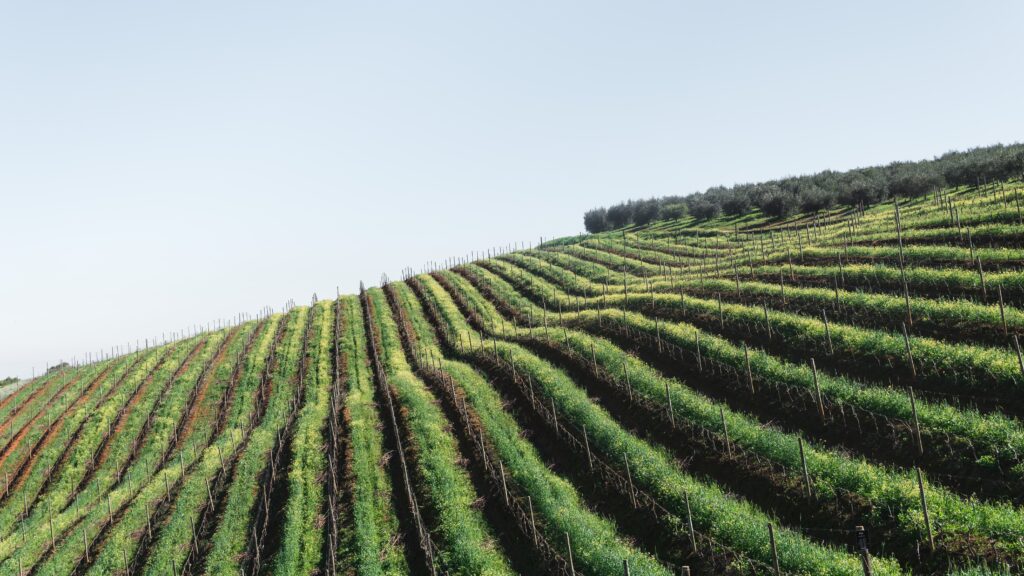If you’re an avid wine enthusiast, you may be contemplating the idea of investing in a wine fridge. After all, it’s the perfect way to ensure your prized bottles are stored at the optimal temperature. But, with environmental concerns on the rise, you may also be concerned about the energy efficiency of such a device. How can you determine if a wine fridge is energy-efficient? This article aims to guide you through the key factors to consider, helping you make an informed decision and choose a wine fridge that not only preserves your favorite vintages but also minimizes its impact on the environment.
Understanding Energy Efficiency
Definition of energy efficiency
Energy efficiency refers to the ability of a device or system to effectively utilize energy with minimum waste or loss. It is measured by how efficiently the device converts input energy into useful output energy, while minimizing energy consumption. In simpler terms, an energy-efficient appliance consumes less energy while performing the same task as its less efficient counterparts.
Importance of an energy-efficient wine fridge
An energy-efficient wine fridge is crucial for several reasons. Firstly, we all strive to reduce our ecological footprint and conserve energy resources. By choosing an energy-efficient wine fridge, you contribute to sustainability efforts and help protect the environment. Secondly, an energy-efficient wine fridge can save you a substantial amount of money in the long run. Since these fridges consume less energy, your electricity bills will be significantly lower compared to using a less efficient model. Lastly, an energy-efficient wine fridge ensures that your precious wines are preserved at optimal temperatures and conditions, maintaining their quality and flavor profile.
How energy efficiency influences wine preservation
Energy efficiency plays a significant role in wine preservation. Proper storage is essential for preserving the taste, aroma, and overall quality of wines. A wine fridge that is energy-efficient ensures the stability of temperature and humidity levels, replicating the ideal conditions found in traditional wine cellars. With precise temperature control and minimal fluctuations, your wines are protected from spoilage and oxidation, allowing them to age gracefully. By investing in an energy-efficient wine fridge, you create an environment that maximizes the lifespan and enjoyment of your wine collection.
Energy Star Rating
What Energy Star rating signifies
The Energy Star rating is a symbol that signifies a product’s superior energy efficiency. It is a voluntary program developed by the United States Environmental Protection Agency (EPA) and the Department of Energy (DOE) to help consumers make informed choices about energy-efficient purchases. A wine fridge with an Energy Star rating meets strict energy efficiency guidelines set by these organizations, ensuring that it operates efficiently and consumes significantly less energy compared to standard models.
Deciphering the Energy Guide Label
The Energy Guide label provides valuable information regarding the energy consumption and estimated operating costs of appliances, including wine fridges. It includes the appliance’s annual energy usage in kilowatt-hours (kWh) and a comparison to similar models. The label also displays the estimated yearly operating cost based on the national average electricity rate. By carefully examining the Energy Guide label, you can make a well-informed decision about the energy efficiency of a wine fridge, enabling you to choose a model that suits both your needs and budget.
Importance of Energy Star rating in gauging energy efficiency
The Energy Star rating serves as a reliable indicator of a wine fridge’s energy efficiency. When selecting a wine fridge, opting for an Energy Star rated model ensures that you are investing in a product that surpasses minimum energy performance standards. This rating not only assures you of reduced energy consumption but also guarantees that the fridge minimizes environmental impact. By choosing an Energy Star rated wine fridge, you promote sustainability while benefiting from long-term energy and cost savings.

Type of Wine Fridge
Compressor wine fridges versus thermoelectric wine fridges
Compressor wine fridges and thermoelectric wine fridges are the two main types available in the market. Compressor wine fridges, also known as compression cooling systems, utilize a compressor and refrigerant gases to cool the internal temperature. On the other hand, thermoelectric wine fridges use a different mechanism, relying on the Peltier effect to create a temperature difference between two conductive materials. This temperature difference allows for cooling without the need for a compressor.
Energy efficiency comparison between two main types
When it comes to energy efficiency, thermoelectric wine fridges have an advantage over compressor fridges. Thermoelectric models consume less energy due to the absence of a compressor motor, resulting in reduced electricity usage. However, it is important to note that thermoelectric fridges may struggle to maintain lower temperatures in hotter environments. Compressor fridges, while typically consuming more energy, offer better temperature control and are suitable for environments with fluctuating ambient temperatures.
How technology and design of fridge influences energy efficiency
The technology and design of a wine fridge play a crucial role in its energy efficiency. Factors such as insulation, door type, and seals significantly impact the fridge’s ability to maintain stable internal temperatures. Advanced insulation materials and techniques can minimize heat transfer, reducing the workload on the cooling system and improving overall energy efficiency. Additionally, well-designed door seals and energy-efficient glass doors prevent temperature leakage, ensuring optimal conditions inside the fridge. By considering these technological aspects, you can make an informed decision when selecting a wine fridge that prioritizes energy efficiency.
Size and Capacity of the Wine Fridge
Correlation between size and energy consumption
The size and capacity of a wine fridge directly influence its energy consumption. Larger wine fridges tend to consume more energy since they require a more powerful cooling system to maintain consistent temperatures throughout the unit. Additionally, larger fridges tend to have larger door openings, leading to increased temperature fluctuations as the door is opened and closed. It is essential to carefully consider the size of a wine fridge and choose one that meets your storage needs while balancing energy efficiency.
Determining the right capacity for your needs
Determining the right capacity for your wine fridge involves considering the number of bottles you intend to store and the available space in your home. It is important to choose a size that accommodates your current wine collection while allowing room for future acquisitions. oversized fridges may lead to unnecessary energy consumption if they are not utilized to their full capacity. On the other hand, an undersized fridge may result in overcrowding, limiting proper air circulation and potentially compromising energy efficiency.
Balancing fridge size with energy efficiency
Balancing the size and energy efficiency of a wine fridge is crucial to optimize its performance. Opting for a slightly larger wine fridge than your current needs, allowing room for future growth, can be a wise decision. However, it is important to avoid excessively large fridges that may consume more energy than necessary. By selecting a wine fridge with an appropriate size, you can strike a balance between storage capacity and energy efficiency, ensuring optimal preservation of your wines while minimizing energy consumption.

Power Consumption
Understanding Watts and Kilowatt Hours
power consumption is measured in watts (W), which represents the amount of electrical energy used by an appliance at a given time. Kilowatt-hours (kWh), on the other hand, measure the energy consumption over a specific period. One kilowatt-hour equals 1,000 watts of power used continuously for one hour.
Estimating energy consumption based on power rating
Estimating the energy consumption of a wine fridge can be done by understanding its power rating. A higher wattage indicates higher power consumption, which translates to greater energy usage. By multiplying the power rating (in watts) by the operating hours, you can estimate the energy consumed in kilowatt-hours. It is important to note that this calculation is an estimate and does not factor in additional variables such as temperature settings or the fridge’s energy efficiency rating.
How power consumption implies energy efficiency
Power consumption is closely linked to energy efficiency. An energy-efficient wine fridge operates optimally by utilizing minimal power consumption to maintain desired temperature levels. By investing in an energy-efficient wine fridge, you reduce unnecessary energy wastage, ensuring that your fridge operates at peak performance while consuming the least amount of electricity. Understanding the power consumption of a wine fridge allows you to gauge its energy efficiency and make an informed decision when selecting a model that aligns with your energy-saving goals.
Insulation and Door Type
Importance of good insulation in a wine fridge
Good insulation is vital for the energy efficiency of a wine fridge. Proper insulation minimizes heat transfer from the external environment, reducing the workload on the cooling system. By ensuring that the fridge is well-insulated, the cooling system can operate more efficiently, consuming less energy to maintain the desired temperature. Good insulation also helps to maintain stable temperature and humidity levels inside the wine fridge, creating an optimal environment for wine preservation.
Comparing energy efficiency of glass doors versus solid doors
The choice between glass doors and solid doors in a wine fridge can impact its energy efficiency. Glass doors offer aesthetic appeal and allow for a clear view of your wine collection; however, they can be less energy-efficient compared to solid doors. Glass is a poor insulator, making it susceptible to thermal transfer between the inside and outside of the fridge. This can lead to increased energy consumption as the cooling system works harder to maintain the desired temperature. Solid doors, on the other hand, provide better insulation, minimizing temperature fluctuations and reducing energy consumption.
Role of proper sealing and insulation in maintaining energy efficiency
Proper sealing and insulation play a crucial role in maintaining the energy efficiency of a wine fridge. Well-designed door seals prevent leakage of cold air, minimizing temperature fluctuations caused by ambient temperature changes. Proper insulation throughout the fridge also ensures that heat transfer from external sources is minimized, allowing the cooling system to operate more efficiently. By prioritizing proper sealing and insulation, you can maximize the energy efficiency of your wine fridge while ensuring optimal wine storage conditions.

Temperature Range and Stability
How temperature stability determines energy usage
Temperature stability plays a significant role in energy usage within a wine fridge. A wine fridge that is unable to maintain a stable temperature requires the cooling system to work harder, consuming more energy to compensate for the fluctuations. On the other hand, a wine fridge with excellent temperature stability can operate more efficiently, as the cooling system only needs to activate when necessary to maintain the desired temperature. By investing in a wine fridge with superior temperature stability, you can ensure that your wines are preserved optimally while minimizing energy consumption.
Impact of temperature fluctuations on energy efficiency
Temperature fluctuations negatively impact energy efficiency in a wine fridge. Frequent fluctuations require the cooling system to cycle on and off more frequently, leading to increased energy consumption. Moreover, temperature fluctuations can affect the quality and preservation of wines, potentially compromising their taste and aging process. By investing in a wine fridge that provides precise and stable temperature control, you can prevent unnecessary energy usage and ensure the preservation of your wine collection.
Comparison of energy requirements for different temperature ranges
Different temperature ranges require varying energy requirements in wine fridges. For instance, a wine fridge set at a higher temperature range consumes less energy as it requires less cooling power to maintain the desired temperature. Conversely, wine fridges set at lower temperature ranges, such as those used for storing white or sparkling wines, typically consume more energy due to the need for increased cooling power. When selecting a wine fridge, it is important to consider the temperature range you require and its impact on energy consumption to make an informed choice.
Tips to Enhance Your Wine Fridge’s Energy Efficiency
Positioning your wine fridge correctly
Proper positioning of your wine fridge is crucial for maximizing its energy efficiency. Ensure that the fridge is placed in a well-ventilated area away from direct sunlight, heat sources, and other appliances that generate heat. This prevents unnecessary heat transfer and reduces the workload on the cooling system. Additionally, maintaining sufficient clearance around the fridge allows for proper air circulation, optimizing its cooling performance and energy efficiency.
Regular maintenance and cleaning
Regular maintenance and cleaning are essential for enhancing the energy efficiency of your wine fridge. Clean the condenser coils regularly to remove dust and debris, as buildup can obstruct airflow and reduce cooling efficiency. Additionally, ensure that the door seals are clean and free from any obstructions to maintain a proper seal and prevent air leakage. Simple maintenance tasks, such as defrosting the fridge when necessary and keeping the interior clean, also contribute to improved energy efficiency.
Importance of not overfilling or underfilling the fridge
Properly filling your wine fridge is crucial for its energy efficiency. Overfilling the fridge can restrict proper airflow, hindering the cooling process and potentially leading to temperature fluctuations. On the other hand, underfilling the fridge results in excess air circulation, causing the cooling system to work harder than necessary. By striking the right balance and ensuring that your wine fridge is appropriately filled, you optimize its energy efficiency and preserve your wines under ideal conditions.
In conclusion, understanding energy efficiency is essential when choosing a wine fridge. By considering factors such as Energy Star ratings, fridge type, size, power consumption, insulation, door type, temperature stability, and following energy-saving tips, you can make an informed decision and select a wine fridge that not only preserves your wines but also minimizes energy consumption. An energy-efficient wine fridge allows you to enjoy your favorite wines, knowing that you are contributing to sustainability efforts while reducing your energy costs. So, toast to both the planet and your wine collection by choosing an energy-efficient wine fridge today!
